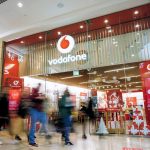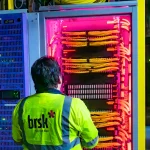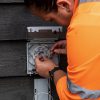TOTSCo Provide Update on Progress of UK Broadband ISP Switching Performance

The One Touch Switching Company, which is the industry-led company responsible for helping to deliver Ofcom’s solution for easier and quicker UK switching between home broadband and phone providers on different networks (One Touch Switching), has provided an update on their progress toward refining the OTS solution as it passes 2 million successful switches since launch.
The OTS system, which went live on 12th September 2024, remains a Gaining Provider Led (GPL) process, where the customer contacts their new (“gaining“) ISP to start and manage the process on their behalf. But despite a bit of a bumpy start and some ongoing issues, which we won’t recap today, this has now been widely adopted by the vast majority of ISPs; TOTSCo is now also working to make a similar switching system available to businesses in “early 2026” (here).
The latest update reveals that TOTSCo’s related messaging hub has now processed 2 million switches since its launch, running at a rate of roughly 1.8 million over every 12-months. Hub match rates (switch match success rates) are also trending upwards in the long term, with overall rates up around 10% since go-live, and a record daily figure of 69.7% last week (this is the observed rate – the customer experience will be better as some retries will be successful).
Advertisement
At the same time, the best observed match rate between two larger users (unamed major broadband ISPs) stands at 83%, which TOTSCo said shows “what can be achieved … these figures are an indication of how the ecosystem is maturing as more providers refine their processes and data“. Take note that Black Friday should be having an impact on the most recent stats via an uptick in switching.
Mark is a professional technology writer, IT consultant and computer engineer from Dorset (England), he also founded ISPreview in 1999 and enjoys analysing the latest telecoms and broadband developments. Find me on X (Twitter), Mastodon, Facebook, BlueSky, Threads.net and Linkedin.
« Vodafone Set to Boost Power Backup at Key Mobile Mast Sites
Advertisement
Leave a Reply Cancel reply
Privacy Notice: Please note that news comments are anonymous, which means that we do NOT require you to enter any real personal details to post a message and display names can be almost anything you like (provided they do not contain offensive language or impersonate a real person�s legal name). By clicking to submit a post you agree to storing your entries for comment content, display name, IP and email in our database, for as long as the post remains live.
Only the submitted name and comment will be displayed in public, while the rest will be kept private (we will never share this outside of ISPreview, regardless of whether the data is real or fake). This comment system uses submitted IP, email and website address data to spot abuse and spammers. All data is transferred via an encrypted (https secure) session.






















































If for some reason I had to move from the network I am with now to Openreach (spit), I would not use the one touch switching, I rather keep the network I have got until the other network is up and running. I did that when I went from FTTC to FTTP.
If there is a problem installing the new network, then it is possible that the customer is left without broadband.